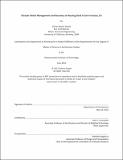| dc.contributor.advisor | John E. Fernández. | en_US |
| dc.contributor.author | Saiyed, Zahraa Nazim | en_US |
| dc.contributor.other | Massachusetts Institute of Technology. Dept. of Architecture. | en_US |
| dc.coverage.spatial | n-us-ca | en_US |
| dc.date.accessioned | 2012-09-11T17:32:56Z | |
| dc.date.available | 2012-09-11T17:32:56Z | |
| dc.date.copyright | 2012 | en_US |
| dc.date.issued | 2012 | en_US |
| dc.identifier.uri | http://hdl.handle.net/1721.1/72649 | |
| dc.description | Thesis (S.M.)--Massachusetts Institute of Technology, Dept. of Architecture, 2012. | en_US |
| dc.description | This electronic version was submitted by the student author. The certified thesis is available in the Institute Archives and Special Collections. | en_US |
| dc.description | Cataloged from student submitted PDF version of thesis. | en_US |
| dc.description | Includes bibliographical references (p. 156-160). | en_US |
| dc.description.abstract | This thesis investigates the potential effects of a 7.2 magnitude earthquake in San Francisco City, particularly the implications on San Francisco's residential housing stock and impacts on the construction and demolition waste stream. The study uses System Dynamics methodology to analyze the feasibility of recycling disaster debris as new construction material to rebuild the diminished housing stock. A meta-analysis identifies capacity requirements for transport and processing material, and seeks to project a time frame for refurbishing lost housing. Simulated scenarios of policy measures provide the basis for recommendations on improving San Francisco's post-disaster recovery as related to debris handling and reoccupation of housing. Results show that an increased use of recycled content products diverts upwards of 1.6 million tons of debris from landfill, with an additional two years of delay in overall recovery. Under this hypothesis, and considering residential housing recovery as a proxy for city-wide recovery, the effects of a largescale earthquake would require an estimated recovery time of 6.8 years. Future work will address additional influencing variables of economics while honing existing factors within the dynamic model, as well as applications to other vulnerable cities in a domestic and international context. | en_US |
| dc.description.statementofresponsibility | by Zahraa Nazim Saiyed. | en_US |
| dc.format.extent | 160 p. | en_US |
| dc.language.iso | eng | en_US |
| dc.publisher | Massachusetts Institute of Technology | en_US |
| dc.rights | M.I.T. theses are protected by
copyright. They may be viewed from this source for any purpose, but
reproduction or distribution in any format is prohibited without written
permission. See provided URL for inquiries about permission. | en_US |
| dc.rights.uri | http://dspace.mit.edu/handle/1721.1/7582 | en_US |
| dc.subject | Architecture. | en_US |
| dc.title | Disaster debris management and recovery of housing stock in San Francisco, CA | en_US |
| dc.type | Thesis | en_US |
| dc.description.degree | S.M. | en_US |
| dc.contributor.department | Massachusetts Institute of Technology. Department of Architecture | |
| dc.identifier.oclc | 808363040 | en_US |
